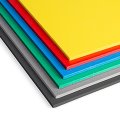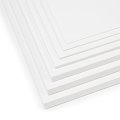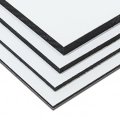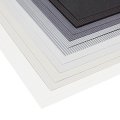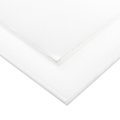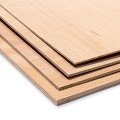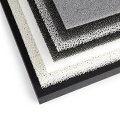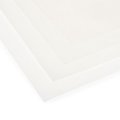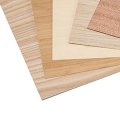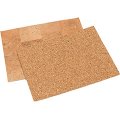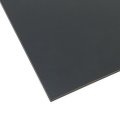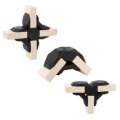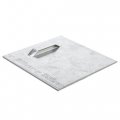Rigid Foam Sheets
Use of polystyrene rigid foam panels
Foams are described in the German Industry Norm 7726 thus: “materials which have cells (open, closed or both) distributed throughout the entire mass and which have a bulk density (DIN 53420) which is less than the density of the skeleton substance.” Every plastic, whether thermoplast, duroplast or elastomer, can theoretically be reworked into a foam but only a few types like polystyrene, PVC or polyurethane have any real practical applications. There are various methods for producing foams from plastic: in the production of polystyrene foam, polystyrene granules which already contain a blowing agent are steam shocked into forming the well known polystyrene beads. The high temperatures of the steam soften the thermoplastic polystyrene and the blowing agent vaporises whereupon small bubbles develop within the beads. The addition of more steam brings about the second stage of the production whereby the beads are fused together and polystyrene foam blocks, sheets or shaped parts are formed. The production of the considerably thicker and sturdier polystyrene rigid foams is a different matter. The PS granules are pressed together using an extruder and a blowing agent is added under pressure. When the material strand leaves the extruder jet, the blowing agent expands and turns the plastic into foam. Chlorofluorocarbons (CFC) have often been used as the blowing agent and still are – however in a modified form. After the passage of the CFC halon ordinance in 1991, a whole group of chlorofluorocarbons with a high potential for damaging the ozone have been forbidden for use as blowing agents. Manufacturers now use in their place gases like CO2 or partially halogenated hydrocarbons with less negative potential. For the production of polyurethane foams other processes than those used with PS or PVC must be used because crosslinked polyurethane can no longer be melted. PUR foam is formed when the fundamental component of the plastic is foamed during the crosslinking reaction. During this process chemical or physical blowing agents are utilized. Many different polyurethanes require no agents at all for foaming because the fundamental components give off carbon dioxide during the crosslinking reaction which itself foams the reaction mass. Uses: Rigid foam is the basis for a large range of products: because of its insulating qualities polystyrene foam or PS rigid foam is used in construction as well as for making disposable tableware. What makes the inexpensive expanded polystyrene especially interesting as an impact resistant packaging material is its combination of light weight (the density of polystyrene foams runs between 20 and 200 kg/m³) and relatively high stability. Polyurethane foams can be found practically everywhere: rigid foams as insulation, thicker sheets as self-supporting construction components, soft foam in chair cushions, car seats, armchairs and mattresses – and you have certainly had the kitchen sponge cloth often enough in your hands. From a special representative of the class of foams many flexible tennis shoe soles are made. The so-called integral foams display a variety of different densities. The core is somewhat loose but as you move outwards towards the surface the increasingly denser cell structure becomes ever more compacted until finally at the surface itself a smooth consistent layer is built. The soft PU integral foams can not only be found caressing our feet but are also accompanying us when driving our cars as headrests, steering wheels or dashboards. The above mentioned combination of high stability and low density is also taken advantage of in making sandwich panels. Boards like KAPA Line or KAPA Mount which are so often used in the fields of exhibitions and advertising are mostly made out of polyurethane foam which is covered in paper or cardboard. As a result, square-metre large paper surfaces with light weight and excellent stiffness are created.
